Wood Species
When designing a custom kitchen around the way you live, there is one simple thing you need to know — each wood has a very different character that will determine the feel of your kitchen. To help you better understand the various factors that affect the look of wood, we’ve put together a sampling of what you need to know. Communication is key. Express yourself with fine custom cabinetry from Specialty Kitchen & Bath.
Cabinets with character
Select a wood species for your handcrafted kitchen cabinets that is in sync with your life — the drama of varied hickory grains, the reassuring hues of cherry, or the durable comfort of oak. So, if you were a tree — what tree would you be? Your wood. Your life. Fine wood cabinetry you can live with.
Alder (Red Alder or Western Alder)
- Very consistent light brown with a reddish tint
- Straight grain with no distinct grain pattern
- Even texture
- Hardwood that is softer than cherry
- Porous, moderately light and soft wood that is less shock resistant than other species and may dent more easily
- Sensitive to changes in humidity
- Lightens with age, reddish tint diminishing and shifting toward a soft yellow
- Finishes smoothly and takes stain well, absorbing more stain at the end grain because of its porous nature
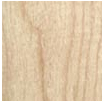
Bamboo
- Characteristics of bamboo are similar to hardwoods, although bamboo is not a wood. It is classified as a grass
- Bamboo is much denser and stronger than hardwoods, making it a renewable resource
- Fine, even grain
- Less susceptible to mold and fungus
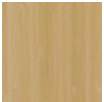
Cherry
- Colors range from creamy vanilla to deep rich red
- Darkens with age, mellowing to robust reddish-brown with golden luster
- Straight, satiny, more subdued grain
- Small gum pockets can produce distinctive markings
- Distinguished by an occasional pitch-pocket or bird-peck
- Fine, uniform, smooth texture
- Sensitive to changes in humidity
- Machines, glues and holds fasteners well
- Good shock and dent resistance
- Excellent finishing qualities because of its uniform texture

Coconut Palm
- Fast growing tropical wood
- Will naturally range in color from pale caramel tones to deep browns
- Deep, distinctive grain pattern which naturally separates as the wood ages
- Unique surface texture and appearance
- Fibrous wood, as can be seen in the distinctive end grain texture of the wood
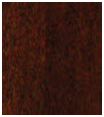
Hickory
- Color varies dramatically from white sapwood to near-black heartwood, sometimes with inconspicuous fine brown lines
- Use of both sapwood and heartwood provides striking contrasts called “calico”
- Generally fine and straight-grained, but may also have flowing variations in grain
- Can exhibit dramatic and random burls, mineral streaks or specks
- Course and even texture
- Extremely tough and resilient
- Sensitive to changes in humidity
- Stains and finishes well with natural grain pattern accentuated by medium to dark finishes
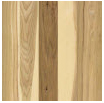
Maple (Hard Maple)
- Color ranges from cream to light reddish-brown
- Light, creamy brown color accentuates mineral streaks and color variations
- Usually straight-grained, but sometimes has highly figured bird’s-eyes that resemble small circular or elliptical figures
- Color will take on a golden hue with age
- Sometimes exhibits a burl grain – clusters of round curls
- Fine and uniform texture
- Extremely durable, strong and stiff with excellent resistance to shock, dents and abrasion
- Sensitive to both ultraviolet light and changes in moisture
- Machines and holds fasteners well
- Uniform texture and tight grain make it excellent for stains and paints
- Mineral streaks darken with stain
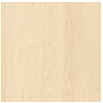
Oak (Red Oak)
- Color varies from rich wheat to warm yellow and rich reddish brown
- May be streaked with green, yellow or black minerals
- Medium-coarse to coarse texture
- Straight prominent open grain distinguished by rays that reflect light and may vary from sweeping arches to tight grain patterns
- Very high dent and shock resistance
- Machines and glues well
- Holds nails and screws well because it is heavy, strong and hard
- Sensitive to changes in humidity
- Responds well to a wide range of finish tones
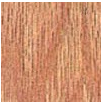
Quarter Sawn Red Oak
- Harvested from northern red oak by a special sawing process, with boards cut along the radius of the log
- Hallmark of the Arts & Crafts and Mission style, prized for the medullary ray flecks that are revealed by this specialized cut
- Distinctive patterns include wavy and interlocked grains, flake figures, pin stripes, fine lines, leafy grains and watery figures
- Appears darker than regular oak due to the tight grain
- Reduces twisting, warping and cupping
- Holds finishes better
- Does not allow liquids to readily pass through it
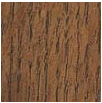
White Oak
- Dense, durable hardwood
- Wood color ranges from a greenish gray to a light brown, occasionally with a slight pink hue
- Arching grain and porous texture
- Some small pin knots and mineral streaks are common

Walnut
- Strong versatile wood
- Consists of a mix of heartwood and sapwood
- Ranges from light brown to dark chocolate, with some blonde or yellow as well
- Color lightens over time
- Beautiful rich color with a unique grain pattern
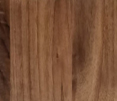
Character Cherry, Character Oak, Character Maple and Character Alder
- Known as “rustic” or “knotty,” these fine wood species have the added character given them by the random size, quality and placement of knots within the wood
- Character wood is specially selected to have more knots, mineral streaks, sapwood and color variations
- Knots vary in size, quantity and placement, but are sound
